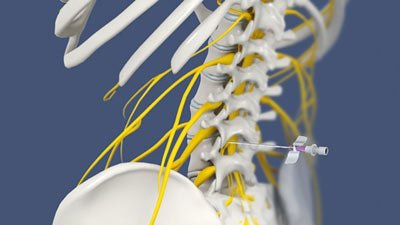You have pain that just doesn’t respond to home remedies like rest and ice. At Pain Management NY, a team of pain experts focuses on delivering targeted pain-relieving options for your specific needs. Their goals are your goals: eliminating your pain and getting you back to your daily routine. A sympathetic nerve block may be just the ticket to resolve the pain you’re experiencing, even when a firm diagnosis can’t be reached.
Your sympathetic nervous system is the series of nerves that branch out from your spine to the rest of your body. The sympathetic system controls many of your body’s involuntary functions, such as digestion, blood flow and sweating. If you’re dealing with a chronic pain condition, a sympathetic block may be an answer.
The experienced pain control team at pain treatment center focuses on delivering the latest in pain treatment options. These treatments are minimally invasive and painless when you visit a top pain doctor in Manhattan who’s spent years delivering successful treatments ranging from cervical epidurals and hip injections to trigger point injections and nerve blocks.
What Conditions Does a Sympathetic Block Treat?

- Raynaud’s syndrome
- Spasming blood vessels that cause pain
- Excessive sweating
- Certain types of chronic stomach pain
- A specific and complex regional pain syndrome called causalgia or reflex sympathetic dystrophy
- Certain types of neuropathy or neuralgia
- Herpes or shingles pain
- Phantom limb pain
Your pain doctor may suggest a sympathetic block as a diagnostic test to better determine the source of your pain. If the injection is successful, your doctor learns more about your condition. If not, more tests may be needed. The best Manhattan pain management doctors at Pain Management NYC rely on the most advanced diagnostic equipment and rapid, accurate lab testing.
Your Sympathetic Block Procedure
The nerves located in your back usually come together when exiting your spine in thick, rope-like conglomerates called ganglions. The location of your pain determines which set of ganglions your doctor targets with a nerve block. If your pain is in your neck or upper body, your doctor finds the stellate ganglion in your neck and administers a sympathetic block called a stellate gang block. If the pain emanates from your lower body, your doctor searches for a lumbar ganglion to administer a lumbar sympathetic nerve block.
The procedure, like most nerve block injections, is relatively straightforward:
- Meet with your pain management specialist and discuss the severity and location of your pain, symptoms, medical history, family history, any injuries or diseases related to your pain, allergies you may have, and any medications, vitamins, or supplements you may be taking.
- You may be asked to fast for six hours before the procedure.
- If necessary or desired, you receive an intravenous line to administer medication to relax you during the procedure, although you’ll be awake and alert so you can answer any questions your doctor may ask.
- You lie on your stomach or your side, depending on the area your doctor needs to access.
- The area surrounding the injection site, either at your neck or lower back, is cleaned and sterilized.
- A local anesthetic is administered to numb the area.
- Using a small needle and with the assistance of a fluoroscope, a type of contrast x-ray, your doctor injects contrast dye to make sure the needle is in the right place.
- An injection of pain-blocking medicine is injected near the correct ganglion.
After Your Sympathetic Block Procedure
Stellate gang blocks and lumbar sympathetic nerve blocks are safe procedures when you rely on the expertise of a pain doctor with extensive experience in administering the injections, such as those at Pain Management NYC. You’re able to go home after a short period of observation. If you received a sedative, make sure to bring someone to drive you home.
Your pain should be reduced to a point where you can begin or continue the multidisciplinary rehabilitation programs your doctor has implemented to help you strengthen and stretch compromised muscles. Some of the rehab options may include pain medicine, physical therapy and speech therapy.
You can receive a series of injections over a period of time for the best pain-relief results. Unfortunately, nerve blocks don’t work for every condition or every situation. If you’re pregnant, required to take certain medications or have a bleeding disorder, a sympathetic block may not be right for you. Contact your pain doctor at Pain Management NYC today about whether you’re a good candidate for a sympathetic block.

Leon Reyfman, MD, is a top-rated, best-in-class interventional pain management doctor. He is a nationally recognized pain relief specialist and is among the top pain care doctors in New York City and the country. He is an award-winning expert and contributor to prominent media outlets.
Dr. Leon Reyfman has been recognized for his thoughtful, thorough, modern approach to treating chronic pain. He has been named a “top pain management doctor in New York” and one of “America’s Top Doctors™” for advanced sports injury treatments. Among other accolades, he was voted by peers as a “Castle Connolly Top Doctors™” and “New York Super Doctors™”. Dr. Leon Reyfman was a part of the medical team at the 2016 Summer Olympic Games in Rio de Janeiro, Brazil.
